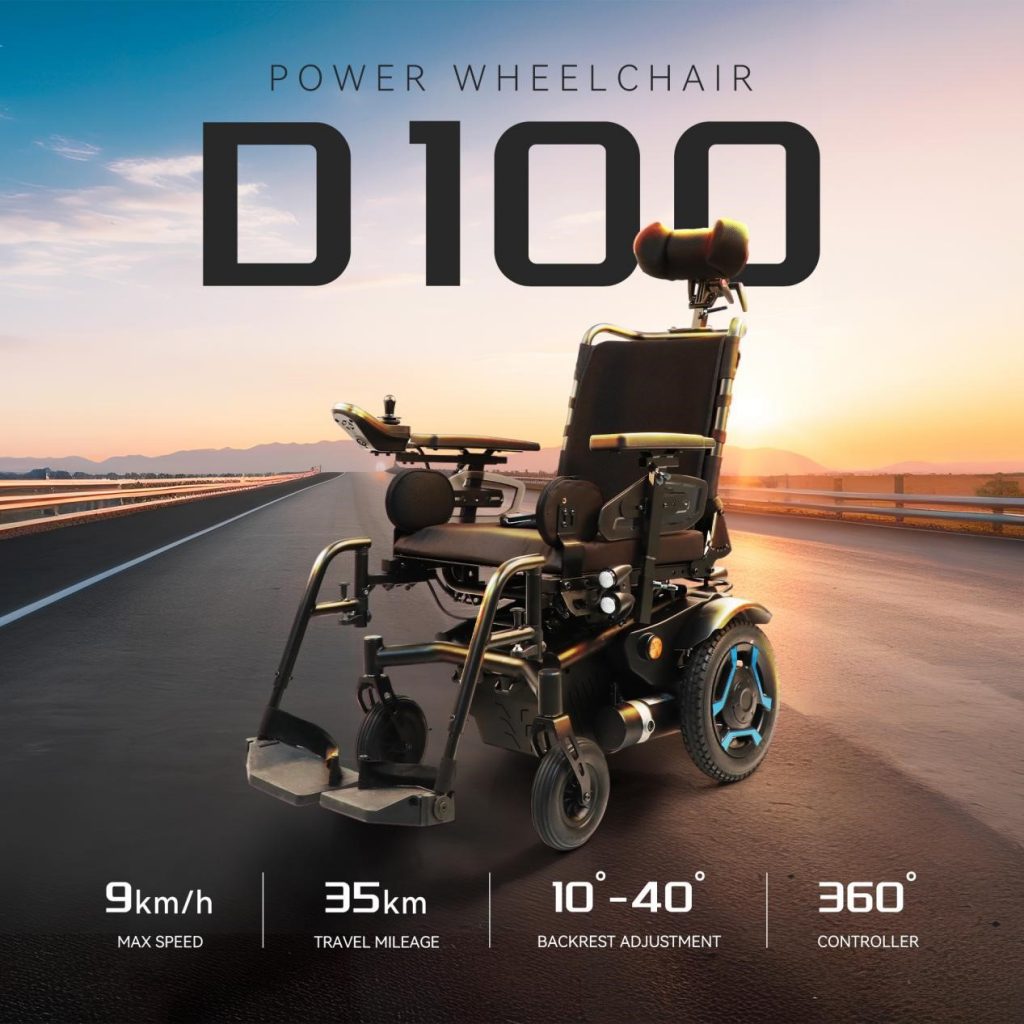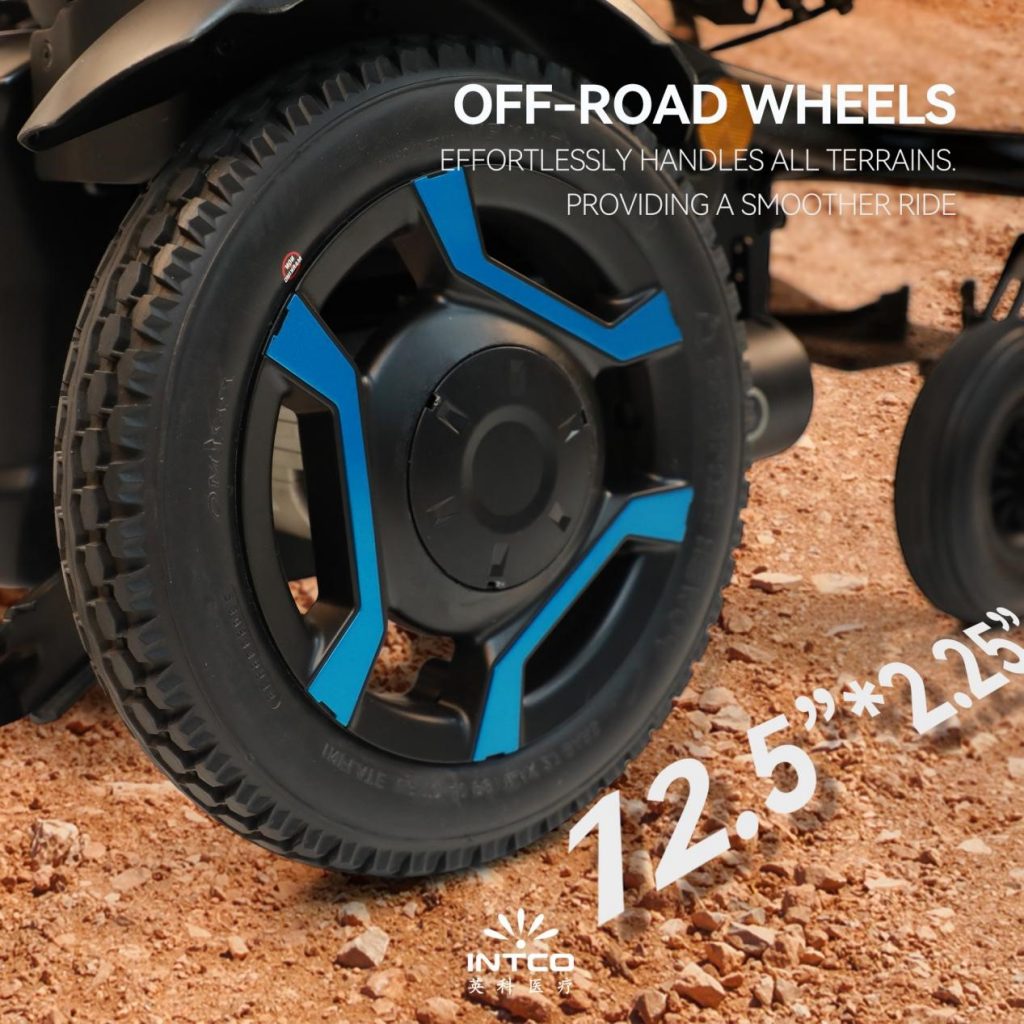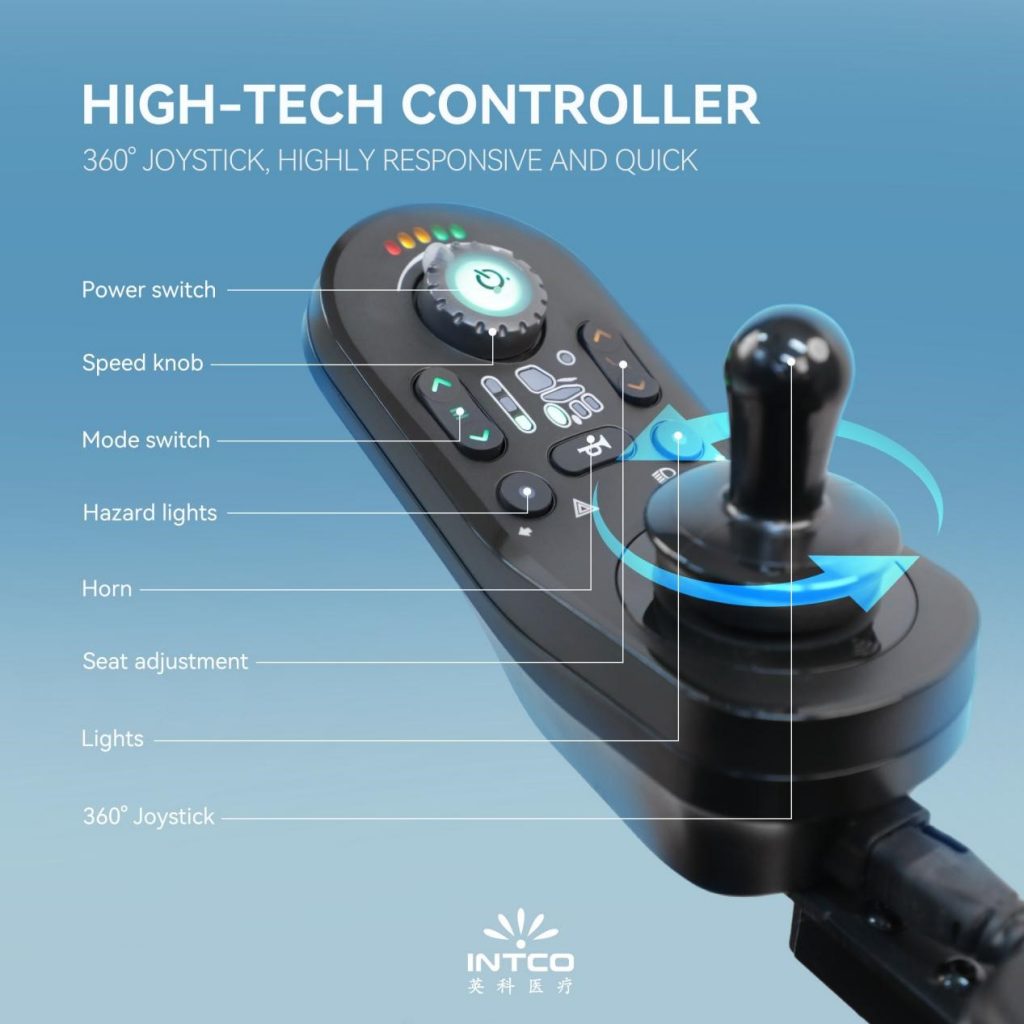Contact Us
Pros and Cons of a Manual Wheelchair Compared to an Electric Wheelchair
Definitions of Different Wheelchairs
Manual Wheelchair
A manual wheelchair is a mobility device designed to be propelled by the user or an attendant. It features large rear wheels and smaller front casters, which allow for manual control and navigation. They are typically lightweight and can be easily folded for transport and storage. They require physical effort to move, either by rotating the wheels with the hands or by being pushed by someone else. Due to their simplicity, manual wheelchairs are often a cost-effective solution for individuals with mobility impairments.
Power Wheelchair
An power wheelchair is a motorized mobility device powered by batteries and operated with a joystick or similar control mechanism. This wheelchair type provides enhanced mobility without the need for physical exertion, making it particularly suitable for individuals with limited upper body strength or severe physical impairments. Power wheelchairs come equipped with various advanced features such as adjustable seating positions, programmable controls, and different driving modes for diverse environments.
Differences Between Manual and Power Wheelchairs
Mobility
User’s Physical Effort Required
The primary difference between manual and power wheelchairs lies in the physical effort required to operate them. A manual wheelchair demands significant upper body strength and stamina, as users must propel themselves by pushing the wheel rims. This can be strenuous, especially over long distances or uneven terrain. On the other hand, an power wheelchair requires minimal physical effort. Users can navigate with ease using a joystick or other control inputs, which is especially beneficial for individuals with reduced hand or arm strength.
Ease of Use in Different Environments
The usability of wheelchairs in various environments also varies between manual and electric types. Manual wheelchairs are generally more maneuverable in tight or confined spaces due to their smaller size and lightweight construction. They are ideal for indoor use, where frequent turning is required. However, manual wheelchairs can be challenging to use on uneven surfaces or steep inclines. Conversely, power wheelchairs are designed to handle a wide range of terrains. Many models come with robust suspension systems and powerful motors that make outdoor navigation and climbing inclines much more manageable.
Cost
Initial Purchase Price
One of the most significant factors to consider when choosing between a manual and an power wheelchair is the initial purchase price. Manual wheelchairs tend to be more affordable, with basic models available at a fraction of the cost of an power wheelchair. The simplicity of their design and fewer mechanical components contribute to their lower price point. Power wheelchairs, however, come at a higher cost due to their advanced technology and additional features. The price of an power wheelchair can vary significantly based on the model, features, and brand, but it is generally higher than that of a manual wheelchair.
Maintenance and Operating Costs
Beyond the initial purchase price, users must also account for ongoing maintenance and operating costs when choosing a wheelchair. Manual wheelchairs generally have lower maintenance needs and costs because they lack complex electronics and motorized components. Maintenance typically involves occasional tire replacements and lubrication of moving parts. Power wheelchairs, in contrast, require more frequent and costly upkeep, including battery replacements, motor servicing, and potential software updates.
Customization
Available Custom Features for Manual Wheelchairs
Customization options for manual wheelchairs are abundant and can greatly enhance user comfort. Users can choose from various seat widths, depths, and cushioning options to fit their specific body types. Additionally, they can opt for adjustable armrests, footrests, and backrests to achieve ergonomic support tailored to their needs. These custom features help to provide a more comfortable and supportive experience for the user.
Custom Options for power wheelchairs
Power wheelchairs offer an even broader range of customizable features designed to maximize comfort and functionality. Users can select advanced seating systems that provide dynamic positioning options such as tilt, recline, and leg elevation, which are essential for individuals who spend long hours in their wheelchair. Furthermore, power wheelchairs often come with customizable control systems, allowing users to adjust the sensitivity and configuration of the joystick or other input devices.
As one of the famous brands in the production and manufacture of medical wheelchairs and mobility scooters, INTCO Medical is a high-tech manufacturing company committing to R&D, production and marketing of medical consumables and durable medical equipment with main business covering medical consumables, rehabilitation equipment, physiotherapy care, etc.
Jiangsu Intco Medical Products Co., Ltd, a branch of Intco Medical, focuses on the research, production, and marketing of rehabilitation equipment and therapy products. We specialize in manual and power wheelchairs, mobility scooters, transfer machines, walking aids, commode chairs, and canes. With hundreds of automated machines, we can produce 1,000,000 manual wheelchairs and 100,000 power wheelchairs annually, serving over 66 countries and regions worldwide
Pros and Cons of Each Type of Wheelchair
Advantages of Manual Wheelchairs
Portability and Storage
One of the main advantages of a manual wheelchair is its portability. These wheelchairs are generally lightweight and can be easily folded, making them convenient to transport and store. This feature is particularly beneficial for individuals who frequently travel or need to store their wheelchair in tight spaces. Manual wheelchairs can fit in the trunk of most cars and can be quickly unfolded for use, which adds to their overall versatility.
Cost-Effectiveness
Manual wheelchairs are typically more affordable compared to power wheelchairs. Their simpler design requires fewer mechanical and electronic components, resulting in lower manufacturing costs. In addition, the long-term maintenance expenses tend to be minimal, as manual wheelchairs do not require battery replacements or complex repairs. This makes manual wheelchairs a cost-effective option for many users, especially those who may not have access to financial assistance.
Disadvantages of Manual Wheelchairs
Physical Strain on User
A significant drawback of manual wheelchairs is the physical strain they can place on the user. Propelling a manual wheelchair requires considerable upper body strength and endurance, which can lead to fatigue, especially over long distances or when navigating challenging terrains. This physical effort can be particularly taxing for individuals with limited strength or stamina, potentially limiting their mobility and independence.
Limited Travel Range
The range of travel is another limitation associated with manual wheelchairs. Users may find it difficult to cover extensive distances without experiencing fatigue. The lack of motorized assistance means that manual wheelchair users are primarily confined to areas where they can comfortably propel themselves. This can restrict their ability to explore certain environments or participate in activities that require more extensive travel.
Advantages of Power wheelchairs
Enhanced Mobility and Independence
Electric wheelchairs offer significant benefits by reducing the physical exertion required by users. These advanced mobility aids are designed with motorized mechanisms that efficiently navigate various terrains and inclines, minimizing the effort needed to propel oneself manually. By eliminating the need for pushing or self-propulsion, electric wheelchairs provide a more comfortable and accessible means of mobility, particularly for individuals with limited upper body strength or endurance. This reduction in physical activity allows users to conserve energy and focus on other aspects of daily living or enjoying their surroundings without the strain associated with traditional wheelchairs.
Advanced Features and Functions
Power wheelchairs come equipped with advanced features that enhance user comfort and functionality. From customizable seating systems that offer dynamic positioning to sophisticated control mechanisms, these wheelchairs are designed to meet diverse needs. Many models include programmable controls, suspension systems for a smooth ride, and the ability to navigate different terrains, making them versatile and highly functional.
Disadvantages of Power Wheelchairs
Higher Purchase and Maintenance Costs
One of the main disadvantages of power wheelchairs is their higher cost. The initial purchase price is significantly more than that of a manual wheelchair due to the advanced technology and features involved. Furthermore, the ongoing maintenance costs are also higher. Regular servicing of the motor and electronic components, along with periodic battery replacements, can make power wheelchairs a more expensive long-term investment.
Heavier Weight and Storage Concerns
Power wheelchairs tend to be heavier and bulkier due to their batteries and motorized systems. This increased weight can pose challenges in terms of transportation and storage. Unlike manual wheelchairs, power wheelchairs cannot be easily folded or disassembled, making them less convenient for travel.
Factors to Consider When Choosing a Wheelchair
When choosing between a manual wheelchair and a power wheelchair, several crucial factors should guide your decision.
Physical Capabilities and Mobility Needs
A manual wheelchair requires upper body strength and dexterity to propel oneself, making it suitable for users who have sufficient arm strength and coordination. In contrast, a power wheelchair is ideal for individuals with limited upper body strength or endurance, as it operates via a motorized system that requires minimal physical effort to maneuver.
Intended Use and Environment
Manual wheelchairs are more lightweight and easier to transport, making them suitable for frequent travel or navigating narrow spaces. On the other hand, power wheelchairs offer greater independence and are better suited for navigating long distances or rough terrain outdoors.
Up to now, with a good product reputation, INTCO Medical has been exported products to more than 120 countries and regions in America, Europe, Asia, Africa and Oceania, which is providing practical products and high-quality services to over 10,000 clients.





